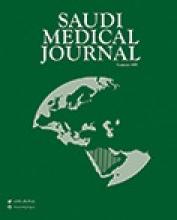Abstract
OBJECTIVES: To investigate the effects of combined use of glutamine and growth hormone on bacterial translocation.
METHODS: The study was performed at the laboratories of the Department of Physiology at Ataturk University Medical School, Erzurum, Turkey between June and September 2007. Forty rats divided into 5 groups of 8, were included in the study. In the study groups, the common bile duct was ligated to obtain obstructive jaundice. The rats in the control group CG were given sodium chloride, in the glutamine group GLG they were given glutamine, in the growth hormone group GHG, growth hormone, and in the glutamine + growth hormone group GLGHG glutamine + growth hormone at equal doses by the same methods. Blood, spleen, liver, lymph node, and cecal content samples were obtained. Total bilirubin TB, alkaline phosphates ALP, and gamma glutamine transferase GGT activities were evaluated.
RESULTS: In the CG, cecal contents were higher than in the GLG, and cecal contents and BT were higher than in the GHG and the GLGHG. The BT rate was the lowest in the GLGHG, with a borderline difference with the values of the GLG and GHG.
CONCLUSIONS: We found that in preventing BT, combined use of glutamine, and growth hormone was more effective than using each of these agents alone.
- Copyright: © Saudi Medical Journal
This is an open-access article distributed under the terms of the Creative Commons Attribution-Noncommercial-Share Alike 3.0 Unported, which permits unrestricted use, distribution, and reproduction in any medium, provided the original work is properly cited.






